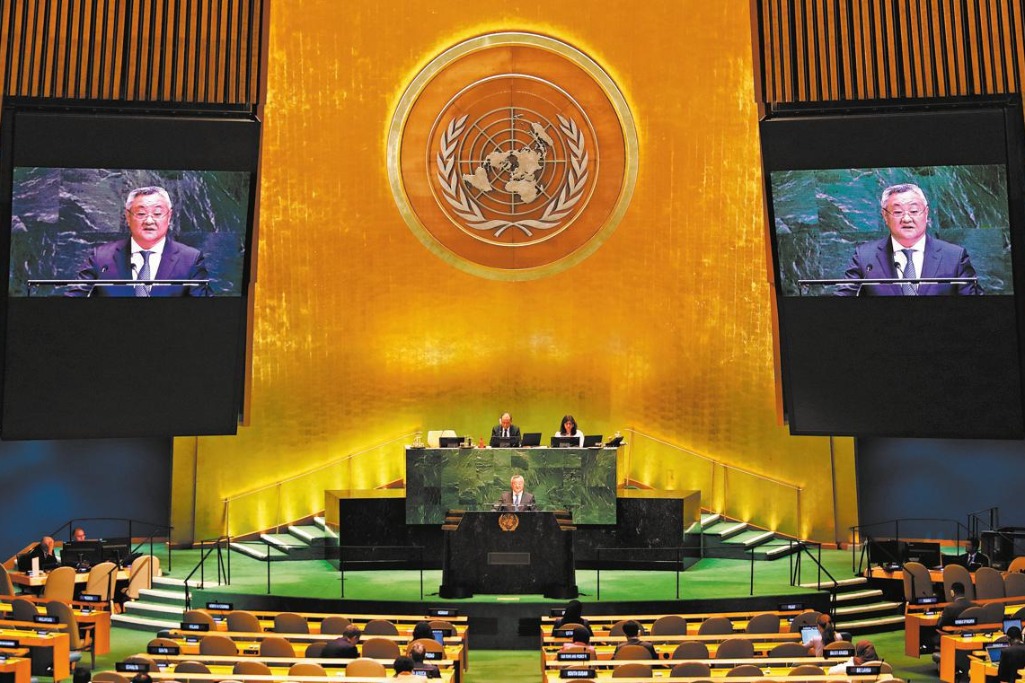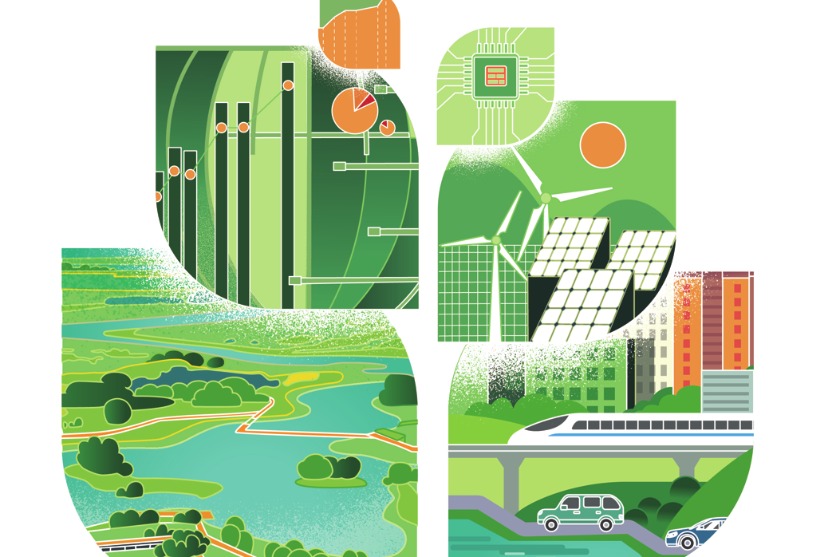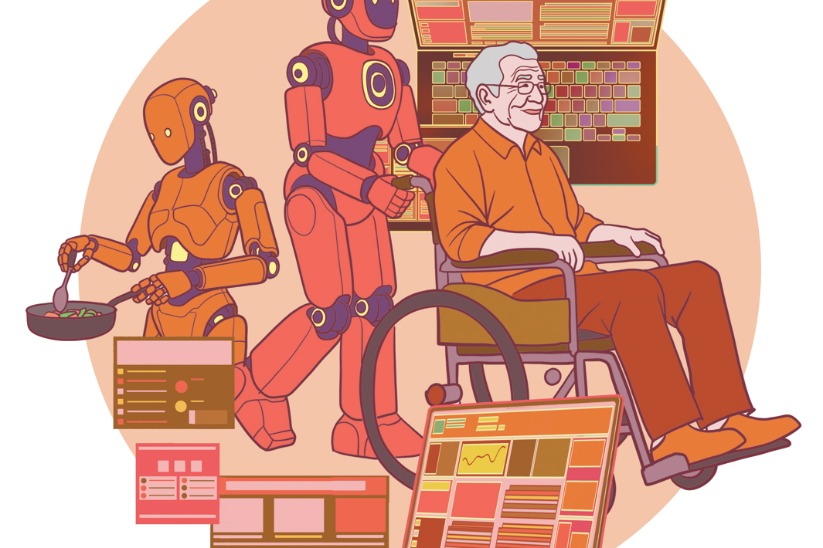Glimpses into the Chinese path to modernization


In 1933, a Shanghai-based monthly journal published a special issue on "China's modernization" in which some scholars discussed the path to China's modernization. While a few advocated "total Westernization", others argued that China embrace Soviet socialism on the road to realizing modernization. The scholars couldn't reach a consensus, though, as China was nowhere near achieving modernization at the time.
Almost 90 years later, the report of the 20th National Congress of the Communist Party of China in October laid out the "Chinese path to modernization". The concept is not an abstract term written on a piece of paper. Instead, it reflects China's progressive development on the way to becoming a great modern socialist country. Here are glimpses into the Chinese path to modernization.
Chinese-made products shine at Qatar World Cup
The path to China's modernization follows the general law of promoting productivity and development through industrialization, informatization and economic globalization. The 2022 Football World Cup provided China with a perfect stage to showcase and share the fruits of its journey toward modernization.
Jointly built by China Railway Construction Corporation and HTK Contracting and unveiled just before the World Cup in Qatar, the Lusail Stadium looks like a burnished golden vessel with its design inspired by the sail of a traditional dhow. Apart from being one of the most complex, intricately designed and advanced World Cup stadiums, the Lusail edifice not only features on the new Qatari 10-riyal banknotes but also demonstrates Chinese companies' competence, craftsmanship and creativity.
Qatar also bought in 888 energy vehicles from China to provide shuttle services for players, officials and fans across the desert. A majority of the soccer-related products such as balls, trophies and medals sold at the World Cup stores in Qatar are also made in China.
Since the founding of the People's Republic in 1949 when the country had no industrial base, China has traveled a long way, realizing a level of development that took the advanced Western economies centuries to achieve.
Today, China is the biggest manufacturing nation and the second-largest economy, because it learned from the experiences of other countries and explored traditional means to realize modernization. As motivational speaker Ghanim Al Muftah, reciting a verse from the Quran, said at the World Cup opening ceremony, we were scattered on this earth as nations and tribes, so we could learn from each other, and find beauty in our differences.
The grass that delivers happiness and wealth
Some say modernization is a game played by winners and powerhouses. So how can the weak and the poor enjoy the fruits of modernization?
There is a "magic plant" in China called juncao (which literally means mushroom and grass). "Juncao technology", used to grow edible and medicinal mushrooms among other things, is a unique Chinese invention aimed at eradicating poverty.
In 1997, Xi Jinping, then deputy secretary of the CPC Fujian provincial committee, listed the use of juncao technology to help alleviate poverty in the Ningxia Hui autonomous region. The program helped lift more than 17,500 farmers out of poverty in the region.
After juncao's remarkable success in alleviating poverty at home, China shared the technology with other developing countries. In 2001, as the deputy secretary of the CPC Fujian provincial committee, Xi proposed the construction of the first Chinese-assisted juncao demonstration base in Papua New Guinea.
Juncao has benefited 30,000 people in Papua New Guinea, with a world record yield of 853 tons per hectare. To thank China for sharing the juncao technology, a former Papua New Guinea minister even changed his daughter's name to "Juncao".
China has introduced the juncao technology to 106 countries and regions and held about 200 training programs to share its experiences with more than 12,000 foreign specialists. As former UN General Assembly president Maria Fernanda Espinosa Garces said, "Through Juncao technology, China has a great story to tell… The spark lit in Fujian has shown the potential of a single innovation, if nurtured and deployed wisely, to change lives and improve livelihoods across the world."
Juncao, despite being a small example, reflects China's grand goal of achieving modernization, which is aimed at bridging the gap between the poor and the rich. While working to realize common prosperity at home, China is eager to use its successful experiences to help other developing countries achieve faster and better development.
West Lake symbolizes Chinese-style romance
Modernization drives humans toward alienation, according to the Western theory of modernization. And material development ushers in spiritual poverty, which causes the death of romance.
The West Lake in Hangzhou, Zhejiang province, is most representative of Chinese-style romance. Marco Polo, the first westerner to visit Hangzhou, introduced it to the world, calling Hangzhou "the most beautiful and luxurious city in the world". In 2001, the "West Lake Cultural Landscape of Hangzhou" was included in the UNESCO World Heritage List. Comprising the "Three Pools Mirroring the Moon" and "Melting Snow on the Broken Bridge", the West Lake has been open to the public for free since 2002.
In 2002, Xi Jinping, then secretary of the CPC Zhejiang provincial committee, visited the West Lake during his first inspection tour of Hangzhou. Noting the high number of couples at the West Lake, he suggested that the space between the benches be widened so people could enjoy the picturesque view in greater privacy.
How can a country make its people's lives better during the modernization process? Is there any way to make life more dignified, happier and more romantic? The answer lies in tiny details like widening the space between benches around the West Lake.
Skyscrapers, motorways and shining neon signs do represent modernization, but the desire to embrace nature and pursue a spiritual life perhaps matters more. China's path to modernization, thankfully, is aimed at both material and cultural-ethical development.
Photovoltaic sector's rise shows return of the king
Five decades ago, the Club of Rome published its famous report "The Limits to Growth". It predicted that natural resources and the environment are too limited to accommodate the modernization of developing countries. But miracles do happen. China's green transformation offers new possibilities of a harmonious relationship between development and nature. The development of China's clean energy sector has caught the eye of the world, but the photovoltaic industry is certainly the jewel in developing China's crown.
The photovoltaic industry's development started gaining momentum in 2004. But at that time, China relied on imports for 90 percent of its raw materials, exported about 90 percent of the products to the European Union and the United States, and didn't have control over 90 percent of the core technology. Worse, after the US and the EU imposed high tariffs on and even banned Chinese photovoltaic products, most Chinese photovoltaic companies went bankrupt and the industry as a whole lost more than $2 billion.
But in this darkest hour, the Chinese government helped the sector rebound, by activating its internal market and promoting innovation in technology, which gradually localized the photovoltaic industry chains. This helped China to build power stations that in 2021 alone generated 26.36 million kilowatts, benefiting 60,000 poor villages and 4.15 million poor households.
Today, China accounts for more than 70 percent of the world's photovoltaic production. No wonder Josep Borrell, the EU's foreign policy chief, said the EU is highly dependent on supplies from China to realize its ambitious carbon neutrality plan, importing 80 percent of its solar panels from China.
One of the biggest goals of China's modernization is to ensure harmonious coexistence between humans and nature. The story of China's photovoltaic industry reflects China's struggle in transforming its energy sector.
If the Chinese civilization is a great flowing river, China's path to modernization is the new surge. The four examples represent only a small part of the landscape along this river. There are many more touching stories waiting to be discovered and understood by the world.
The Chinese path to modernization is based on the wisdom of Confucius — a just cause should be pursued for the common good — and Marx's vision of an ideal society. Modernity is no longer a monopoly of the West, especially because the success of the Chinese path to modernization has profoundly influenced the course of world history.
The views don't necessarily represent those of China Daily.
The author is a Beijing-based observer on international affairs.


































